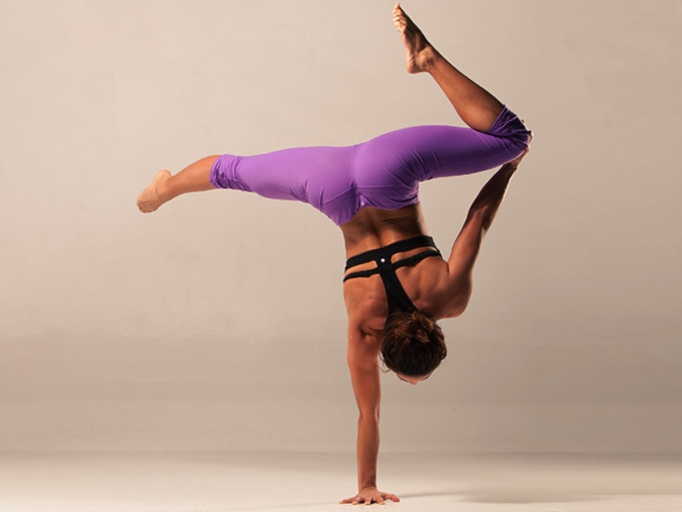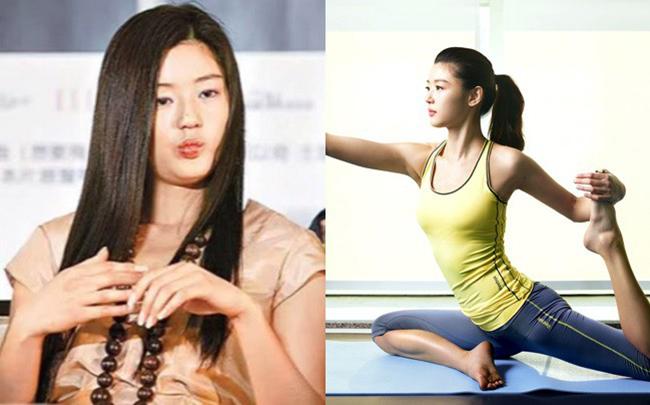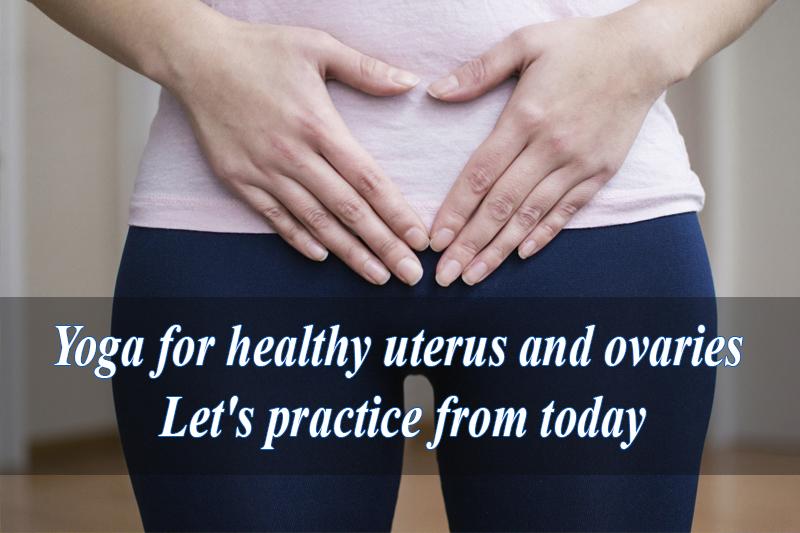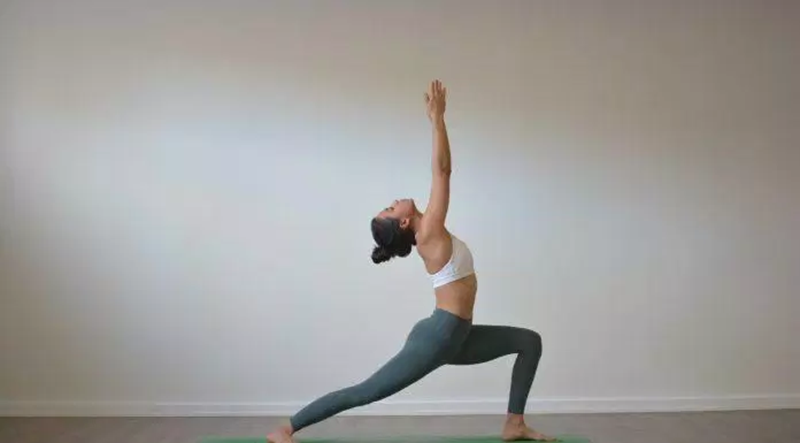Flexibility is one of the most important things in life you want to have because you feel full of energy to do the things you enjoy.
Increasing age not only makes health decline, but the body also gradually loses flexibility. However, experts confirm that regular yoga practice after the age of 30 can help you easily improve your flexibility.
How to improve the flexibility of the body after the age of 30 is a problem that bothers many people. In fact, there are many solutions, but the simplest, safest and easiest to implement must mention yoga.

In this article, Bellyfatzone invites you to learn some yoga movements to help you increase body flexibility.
Why is it important to improve body flexibility after the age of 30?
After the age of 30, most of us look for ways to increase strength and endurance for the body but “neglect” flexibility and flexibility. If you are also having this thought, forget it right away for the following reasons:
Only when the body is flexible and flexible, it can prevent injuries during exercise and in daily life.
A flexible body makes it easy to perform sports exercises, such as swimming or kicking a soccer ball. In yoga, a flexible body will help you perform many difficult poses.
Easily release stress and relax your body after a long working day. When your body feels relaxed, your mind will also become more relaxed and peaceful.
The flexibility of the body will contribute to improving posture and posture, such as preventing hunchback. When the body has good flexibility, the spine is less prone to pain, and the back is less painful, so you can maintain good posture and improve self-confidence.
Why does body flexibility decrease with age?
A supple and flexible body can prevent injuries in daily activities
As age increases, the structure of collagen, a protein in connective tissue (tendons, ligaments, etc.) will begin to decrease. Your body won't keep things it doesn't need, so it will try to get rid of things that aren't used.
If you don't use your muscles, they will gradually become smaller. The same goes for body flexibility. If you don't use it, you will lose it.
If you spend all day sitting in a chair with your back hunched and doing nothing to correct it (sitting correctly, straightening), your body will gradually adapt to this.
Yoga – A simple solution to improve flexibility after 30 years old
Whether you are 30, 40, or even 50 years old, you can still make your body more flexible by practicing yoga. Although flexibility will naturally decrease with age, with regular practice, this problem will still be overcome.
Most importantly, you need to have patience and keep in mind some small notes after practicing yoga:
Make the most of yoga tools such as exercise blocks, exercise balls, exercise rings… These tools will be essential in supporting the performance of postures. If you don't know how to use it, don't hesitate to ask your yoga teacher.
Choose the right yoga class. If you take yoga classes to improve flexibility, choose classes for beginners or if you don't have time, you can invite a yoga teacher to guide you on the right exercises best.
Perform the postures slowly, slowly, avoid being hasty and hasty when performing. You need to give your body time to get used to it before you start practicing difficult poses.
Pay attention to breathing control: Breathing is an important part of yoga. Regular breathing exercises not only help you breathe properly but also bring a sense of relaxation to the body.
Don't set unrealistic goals. If you aim to be able to do splits or inversions in a week (or even a week).
months), it's easy to feel frustrated and soon give up on your workout. Give your body time and observe the changes.
You should practice at least 10 minutes a day to get the most benefit from yoga practice. You can take one day off each week, but if the first few days are too painful, you can take more.
The time it takes for each person to notice results will vary. However, you should maintain regular exercise for at least a month. Usually, you will start to notice a difference after 4-6 weeks.
If you get bored easily or want to enjoy your workout more, you can listen to music while you exercise.
You can view more: Yoga Poses To Increase Sexuality For Men And Women Make You Healthier And Happier Every Day
3 yoga moves to help improve body flexibility after 30 years old
Here are 3 simple yoga poses that help improve body flexibility very effectively that you can try:
1. Cat – cow pose
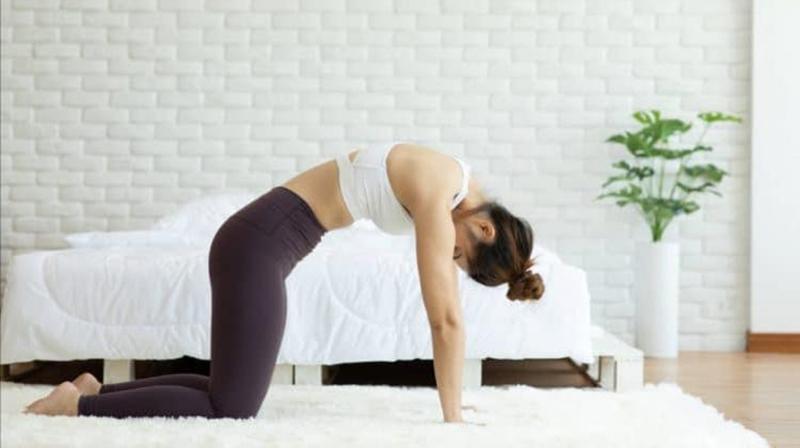
The cat-cow pose stretches, helping the spine, shoulders, and wrists become more flexible. Not only that, but this pose also helps the body release energy and increase blood circulation.
Doing
- 2 hands on the floor, 2 knees bent and legs extended
- 2 arms placed perpendicular to the floor, 2 hands shoulder-width apart, knees hip-width apart
- Looking forward
- Inhale, bring chin toward the chest, curved back upwards to the ceiling as possible to enter the posture cat
- Exhale, push hips up high, sway back as possible, open the chest, head up toward the ceiling to enter the posture cow
breathe deep and slow - Repeat this movement 5-6 times.
2. Ragdoll pose

- Stand with feet hip-width apart
- Gently bend forward
- Release the head and neck to lengthen the spine.
- Arms are crossed. Imagine yourself as a rag doll, limbs lose and comfortable.
This is a fairly simple squat exercise compared to other exercises because you will not need to touch the floor when your body is not ready. It can be said that this pose is a preparation for the hamstrings to perform more difficult bends.
3. Side twist pose
The side twist pose is performed at the end of a yoga session, which has the effect of improving the mobility of the spine and supporting the digestive system.
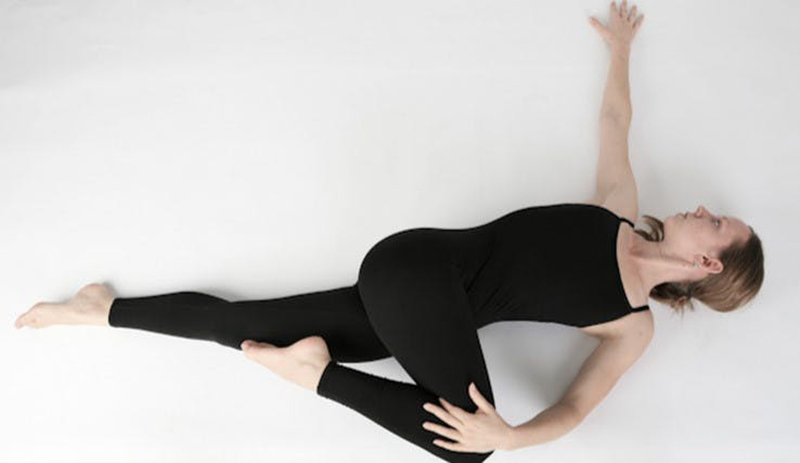
This is a great relaxing pose after a long day of sitting at work because it helps stretch the hips and spine very effectively:
- Lie on your back and relax your body
- Both arms are spread horizontally to form a T shape, creating a straight line with shoulders
- Using your feet as support, lift your hips off the floor and bring your right leg up
- Pull your knees as high as you can and inhale deeply.
Keep your back straight and both shoulders on the floor - Turn your head to the right and look at a fixed point for a few seconds
- Breathe deeply and evenly
- Then switch legs and repeat the same movement above.
Some Frequently Asked Questions
1. How long does it take to practice yoga to feel the flexibility of my body?
The answer to this question largely depends on your age and previous exercise habits. But for the most part, you will feel the change after about 4 to 6 weeks. Everyone will be less flexible in different positions and there will be some parts that take longer. Therefore, it is difficult to give a specific time.
2. How to get results fast?
There is no shortcut to doing this. If you force your body into poses that it's not ready for, you'll hurt yourself. What you can do is be patient and maintain a regular workout even just 10-20 minutes a day.
3. Yoga can improve the flexibility of the body at any age?
Whether you are 16 or 60 yoga can help you do this. However, it's important to remember that the older you get, the more time it will take and the more patience it will take.
Through the above sharing, you probably have some more useful information about increasing your body's flexibility after the age of 30. If you want to start practicing yoga to make your body more flexible and supple, don't hesitate.

Conclude:
If you want to improve the flexibility of the body in a comprehensive way, then not only use the above yoga movements, but you need to combine attention with appropriate eating and other exercises.
View more:
- All the equipment to support your diet
- Top 40 Benefits Of Yoga Every Day Keeps You Energetic and Agile
- How Long is Yoga Effective for Weight Loss and Endurance?
Other exercises that can increase flexibility such as Zumba dance, or gymnastics if you want to build strength. Hope the article brings you little value, please share it with those who need it.
Reference source:
Can You Become Flexible in Your 30's? https://yogarove.com/become-flexible-30s/ Accessed date: 8/5/2020
